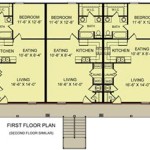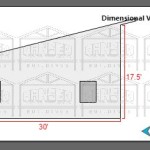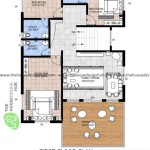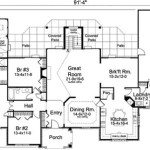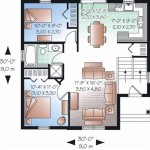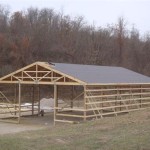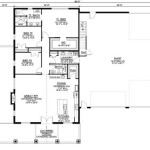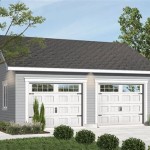French Country House Plans: Designs for Timeless Elegance
French Country house plans evoke a sense of rustic charm, sophistication, and timeless elegance, transporting one to the picturesque landscapes of the French countryside. These designs draw inspiration from the historical farmhouses and manors found in regions like Provence and Normandy, characterized by their warm, inviting atmosphere and focus on natural materials. This article explores the key elements of French Country house plans, highlighting the distinct features and design principles that contribute to their enduring appeal.
Key Elements of French Country Architecture
French Country architecture is readily identifiable through a combination of specific features. These elements work together to create a cohesive and characteristically charming aesthetic. The roofline often sets the tone, while the exterior materials contribute to the overall warmth and visual texture.
Roofs: Typically, French Country homes feature steep, hipped roofs, often clad in slate or clay tiles. The hipped design, sloping upwards from all sides to meet at a central point, provides a distinctive silhouette. Dormers, small windows projecting from the roof, are a common addition, providing natural light and ventilation to the attic spaces. The prominent rooflines contribute significantly to the overall visual impact of the house, adding a sense of grandeur and stability.
Exterior Materials: Natural materials play a crucial role in defining the French Country aesthetic. Stone, brick, and stucco are frequently employed, often in combination to create a visually interesting facade. Stone accents can be used around windows, doors, and corners, providing contrast and adding texture. Brickwork may be exposed or painted in muted colors, contributing to the rustic charm. Stucco, a plaster-like material, offers a smooth, textured finish and is often used in conjunction with other materials. The selection of materials is crucial in establishing the home's connection to the natural environment.
Windows and Doors: Windows in French Country style are often tall and narrow, with multiple panes. Shutters, typically decorative, are a common feature, adding visual interest and enhancing the overall symmetry of the facade. Entry doors are often arched or rectangular, made of solid wood, and may feature decorative hardware. The windows and doors are not merely functional elements but also contribute significantly to the architectural character of the home.
Interior Design Principles in French Country Homes
The interior of a French Country home is designed to be comfortable, inviting, and reflective of the rustic elegance of the exterior. Natural light, warm colors, and comfortable furnishings are key elements that contribute to the welcoming atmosphere.
Open Floor Plans and Natural Light: While traditional French farmhouses might have featured more distinct rooms, modern French Country house plans often incorporate open floor plans that promote a sense of spaciousness and connectivity. Large windows and French doors are strategically placed to maximize natural light, illuminating the interior spaces and creating a bright and airy atmosphere. The emphasis on natural light strengthens the connection between the interior and the exterior environment.
Color Palettes and Textures: The color palettes in French Country interiors typically consist of warm, muted tones inspired by the natural landscapes of the French countryside. Cream, beige, soft yellows, and pale blues are commonly used, creating a soothing and inviting atmosphere. Natural textures, such as exposed wood beams, stone fireplaces, and linen fabrics, are incorporated to add depth and visual interest. These textures contribute to the overall sense of rustic charm and authenticity.
Furniture and Decor: Furniture in French Country style is typically comfortable and functional, often featuring antique or reproduction pieces. Upholstered sofas and chairs with floral or toile patterns are common, adding a touch of elegance and comfort. Wood furniture, such as dining tables and sideboards, is often distressed or aged to create a sense of history and character. Decorative elements, such as wrought iron accents, pottery, and floral arrangements, are used to add personal touches and enhance the overall ambiance. The focus is on creating a space that is both beautiful and livable.
Adapting French Country Designs for Modern Living
While rooted in tradition, French Country house plans can be adapted to meet the needs of modern living. Incorporating contemporary amenities and technologies while preserving the essential design principles allows for the creation of homes that are both functional and aesthetically pleasing.
Modern Amenities: Modern French Country house plans often include features such as gourmet kitchens with high-end appliances, luxurious bathrooms with spa-like amenities, and home offices equipped with the latest technology. These modern amenities are seamlessly integrated into the overall design, ensuring that the home meets the demands of contemporary living without compromising the traditional aesthetic. For example, a state-of-the-art kitchen can be incorporated into a space that retains the rustic charm of a traditional French farmhouse kitchen.
Energy Efficiency: Integrating energy-efficient features is a key consideration in modern French Country house plans. This includes using energy-efficient windows and doors, installing high-performance insulation, and incorporating renewable energy sources such as solar panels. These features help to reduce energy consumption and minimize the environmental impact of the home, while also enhancing its overall comfort and livability. The focus is on creating a home that is both beautiful and sustainable.
Outdoor Spaces: French Country homes often feature expansive outdoor spaces, such as patios, gardens, and courtyards, designed for relaxation and entertainment. These outdoor spaces are often seamlessly integrated with the interior of the home, creating a harmonious flow between the indoors and outdoors. Features such as outdoor kitchens, fireplaces, and comfortable seating areas enhance the usability and enjoyment of these spaces. The emphasis is on creating an outdoor environment that is both beautiful and functional, allowing residents to fully appreciate the natural surroundings.
French Country designs provide a flexible framework that can be tailored to individual needs and preferences. The core elements – the materials, rooflines, colors, and textures – provide a cohesive foundation for creating a home that resonates with both historical charm and modern sensibility. This adaptability is a key reason for the enduring popularity of French Country house plans.
The enduring appeal of French Country house plans lies in their ability to evoke a sense of warmth, comfort, and timeless elegance. By carefully considering the key elements of French Country architecture and interior design, it is possible to create a home that is both beautiful and functional, reflecting the charm and sophistication of the French countryside while meeting the needs of modern living.

French Country House Plans For A 5 Bedroom 4 Bath Home

Home Plan Avignon Sater Design Collection

French Country House Plans Style Home

Home Plan Avignon Sater Design Collection

French Country House Plans Home Design Floor

French Country Transitional Bainbridge Design Group
House Plan 120 2077 3 Bedroom 2641 Sq Ft Country French Home Tpc

The Versailles Madden Home Design French Country Homes

French Country House Plans Design Evolutions Inc Ga

French Country Home 4 Bedrms 3 Baths 2666 Sq Ft Plan 206 1050

